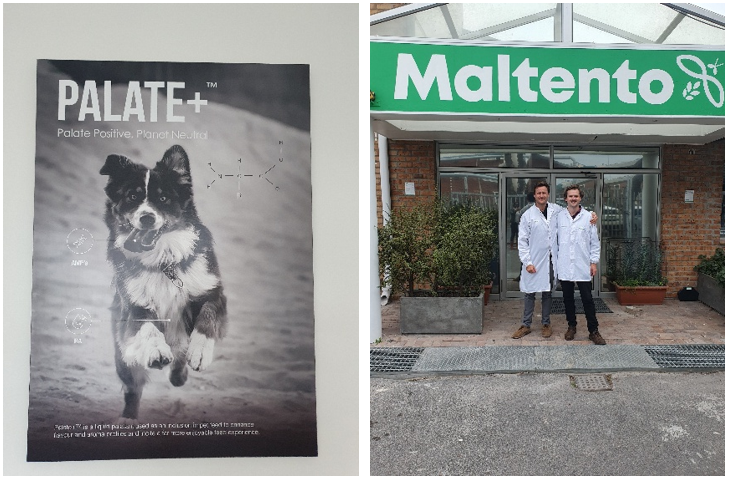Are these the best black soldier fly farms in the world?
Over the past year, I’ve travelled across 14 countries and visited over 50 black soldier fly (BSF) companies as part of my Nuffield Farming Scholarship. From the soybean fields of Brazil to modular farms in Kenya, from high-tech factories in Denmark to frass-focused compost systems in Rwanda — I’ve seen the good, the bad, and the baffling.
This blog series distills what I’ve learnt into practical, occasionally blunt, insights that I hope will help others avoid the common pitfalls of this industry and build something better.
👉 Missed the last post? Can the UK Compete in Insect Farming
Today, I want to share a few of the BSF farms that I consider to be amongst the best in the world, although I should add that there are many more around the world that I haven't visited, and I would very much like to understand their concepts in more detail so I can extend my list...
There’s no single path to success
The global BSF scene is incredibly diverse. Some businesses are running climate-controlled factories with fully automated lines. Others are farming insects in converted sheds using crates, buckets and hand-sorting. Some are laser-focused on producing protein meal. Others barely touch the protein and make their margins on frass, gate fees, or by selling neonates.
At first glance, it’s hard to draw comparisons — but the most successful farms I visited all had one thing in common: clarity of focus.
It starts with understanding what kind of BSF business you’re building. That sounds obvious, but it’s where many go wrong.
There are two early crossroads every BSF operator has to face:
What’s your context?
Your climate, economic environment, regulatory structure and local culture will shape everything — from what feedstocks you can access, to whether you need a fully enclosed facility or a shaded open-air system. You can't apply a European model in Kenya or a Chinese model in Yorkshire. Understanding your landscape is step one.Are you an input business or an output business?
Input-focused farms exist to solve a waste problem — they make money by taking material in. Output-focused farms exist to sell product — protein, oil, frass or live larvae. Some do both, but most will naturally lean one way.
This early decision frames your entire business model. It helps you define your niche, understand your unit economics, and decide whether you’re building for volume, value, or versatility.
Too many BSF ventures try to be everything: waste processor, feed producer, fertiliser company, genetics house, automation pioneer. Many of these companies may have supreme technology, but if the revenues cannot support the costs, what is the point? That’s when things start to wobble. The farms I learned the most from didn’t try to do a little bit of a lot, but instead focused on a lot of a little bit.
The definitive list(?) of the best BSF farms in the world:
Disclaimer: The case studies chosen below are not necessarily the biggest farms or most technically advanced farms, but they are examples of where I’ve been convinced that the business model works.
Chanzi (Tanzania & Kenya)
Chanzi operates in East Africa, leveraging cheap labour, abundant sunshine, and plentiful feedstock — most of which is either free or very low cost. A major part of what sets them apart is their rigorous approach to feedstock sourcing. Instead of treating it as an afterthought, they’ve made it core to their strategy, even establishing their own waste-sorting business in Tanzania to secure consistent supply. This follows a successful model they partnered with in Kenya.
Their system is impressively low-cost, with minimal capital expenditure: concrete beds, polytunnels, homemade equipment, and basic automation using repurposed agricultural machinery. They’ve taken a standard BSF production model and optimised every facet — operating costs, capital costs, yields — with the singular aim of producing larvae at the lowest possible cost per kilo. Chanzi are input and output focused, but above all, they are financially disciplined. This is engineering meets common sense — applied brilliantly.
Their overarching aim is to give value to Africa's waste and to provide protein for the masses. Therefore, it's a volume business that they're building. My question to them is if they will be able to handle the wafer thin margins that comes with commodities and volume.
Marula Proteen (Uganda, Rwanda & Kenya)
Proteen is another East African operation working in a region with the same competitive advantages listed above. Unlike most BSF companies, Proteen is not focused on protein at all — despite the name. Their primary business is frass.
I understand their model today as this. They partner with coffee processors who generate large volumes of coffee pulp with no efficient way to dispose of it. Proteen transforms that pulp into BSF frass using larvae, then sells the frass back to the same processors for use on coffee plantations. Their frass is formulated carefully — a mix of larvae excrement and biomass, composted further and inoculated with other ingredients to create a high-quality product they call Supercharged Frass. The process is circular, collaborative, and efficient. Instead of product sales, their model is effectively a bioprocessing service.
Since speaking to them last year, I have come to understand that their Supercharged frass is being sold outside of this circular model to drum up external sales. I'd say that's a sensible approach to open up incremental revenue streams.
Proteen’s model is notable for two reasons: they’ve pivoted decisively away from the default “protein-first” mindset, and they’ve shown the value of doing one thing well. It’s a masterclass in adaptability and niche focus.
My question to Proteen would be if they can keep these sales up as their supply increases.
Maltento (South Africa)
Maltento operates in South Africa, where labour is relatively cheap and the pet food market is well developed. They’ve built their business around value-added BSF products, particularly for pets. Instead of competing on commodity pet food prices (think chicken, beef, etc which are all by-products of our human food chain), Maltento produces proprietary protein and oil blends with specific health advantages. This means pet food brands can make nutritional claims on a small inclusion of insect feed and Maltento can sell at the added value that BSF products currently require.
Maltento have developed a strong export proposition thanks to Cape Town’s infrastructure, and they’ve carved out a niche in the high-margin pet sector. Their operation is well-optimised, but their biggest advantage may be their marketing. This is a company with a strong proposition and clear product-market fit - one of the clearest demand strategies that I've seen anyway.
The question that remains is scale: if demand for their niche product continues to grow, the model will grow with it. If it plateaus, they may need to transition into broader markets — but for now, they’ve built something defensible, exportable, and profitable.
Infinite Harvest Technologies (Canada)
IHT is based in Ontario, where landfill costs are high, but there is no national organic waste strategy in place — yet. Canada’s horticultural and aquaculture sectors offer promising future markets, but IHT is wisely starting with what’s most viable now: gate fees.
They’ve identified a business opportunity in processing local waste streams for a fee — monetising the intake rather than the output. The production process itself is basic for now, but the strategy is solid: use the gate fee to scale slowly over five years, build expertise, then pivot toward aquaculture once volumes and capability are in place.
This is a good example of a phased approach to scale — starting with what’s feasible, and keeping options open for future market entry. It also shows commercial discipline in not overreaching for markets they aren’t ready to serve.
Ololo Farm (Kenya)
Ololo is a different kind of BSF business. Set on a safari lodge at the edge of Nairobi National Park, their operation is designed for circularity and guest experience. Waste from the restaurant is fed to BSF larvae, which are in turn fed to chickens, pigs, and fish — all of which are consumed on-site. Frass is used to fertilise their fruit and vegetable garden. They also grow azolla to feed livestock and use biogas to generate electricity.
While this model isn’t designed for scale, it’s an excellent example of what BSF farming can look like when integrated into a closed-loop food system. It’s educational, regenerative, and deeply place-based. Guests tour the farm and see firsthand how waste becomes food — and that story becomes part of the brand.
This isn’t a blueprint for mass commercial rollout — but it’s a powerful case study in how BSF farming can be a point of difference within agri-tourism and hospitality.
These examples are from my eyes only and may not showcase the biggest, or technically the best BSF farms around or even that I’ve seen. I may hold strong views on over-engineered systems, because the common trend here is that these systems are more agricultural than technology. But, that's how it should be! What these case studies have convinced me of are instances where a business model works. They all work with the external influences from where they are located. They work with regulation, with the supply and economic landscape, with the local climate and are matching supply with the demand. Again, this is how a business should be run.
I'm excited to keep exploring other innovative systems. If you think you can compete with these examples, or know of any systems out there, please get in touch - david@fly2feed.com.







